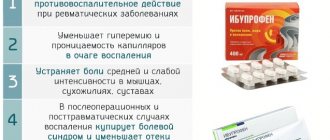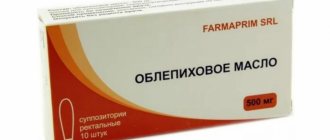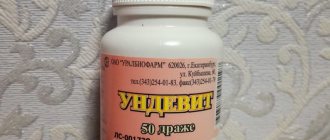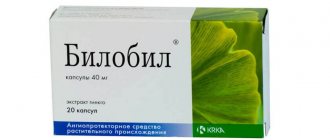Contraindications
When should you not use a drug like Valium? The effect of such a drug will not be as desired if you take it:
- with hypersensitivity;
- coma, shock;
- acute alcohol intoxication;
- acute forms of kidney and liver diseases;
- myasthenia gravis;
- angle-closure glaucoma;
- in childhood up to 6 months;
- during breastfeeding and in the first trimester of pregnancy.
– with hypersensitivity;
– in coma, shock;
– in case of acute alcohol intoxication with weakening of vital functions;
– in case of acute intoxication with drugs that have a depressant effect on the central nervous system;
– with myasthenia gravis;
– with angle-closure glaucoma;
– with severe COPD, acute respiratory failure;
– during pregnancy, lactation.
Interaction
It has anxiolytic, muscle relaxant, sedative, hypnotic, and anticonvulsant effects.
Negative side reactions are:
- addiction;
- development of such paradoxical reactions as anxiety, hallucinations, convulsions or insomnia;
- decreased reaction speed and concentration;
- deterioration of short-term memory;
- movement disorder in the form of ataxia, dysarthria;
- headache and dizziness;
- hypotension or bradycardia;
- long-term use can cause liver and kidney damage, intestinal atony, and reduce libido and potency;
- reactions at the injection site;
- “withdrawal” syndrome and aftereffects, manifested in decreased performance, muscle weakness;
- allergic reactions.
When a patient is prescribed this drug, it is important to inform them what Valium is, because it is a well-known psychotropic tranquilizer that has a number of side effects, including withdrawal syndrome and addiction. The attending physician, when prescribing it, is obliged to inform the patient about the possible negative effect on the body and offer other treatment options.
- Valium Roche causes potentiation of the effects of alcohol, anticonvulsants, hypnotics, antihistamines and hypotensive substances, neuroleptics, tricyclic antidepressants, general anesthetics, analgesics, muscle relaxants.
- Analeptics and psychostimulants can reduce the activity of Diazepam.
- Antacids reduce the rate, however, not the level of absorption of Diazepam.
- Isoniazid - prolongation of excretion and increase in blood concentration of Diazepam.
- Inhibitors of microsomal oxidation, for example, Cimetidine, Ketoconazole, Omeprazole, fluvoxamine, Fluoxetine, cause changes in pharmacokinetics and an increase in the duration of the clinical effects of Diazepam.
- Phenytoin is subject to changes in plasma concentration levels.
- Rifampicin - decreases the concentration of Diazepam in the blood.
- Erythromycin - slows down the metabolism of Diazepam in the liver.
The drug "Valium" causes potentiation of the effects of alcohol, hypnotics, anticonvulsants, hypotensive and antihistamines, as well as neuroleptics, general anesthetics, tricyclic antidepressants, muscle relaxants and analgesics.
Psychostimulants and analeptics can significantly reduce the activity of the drug "Diazepam".
Antacids reduce the rate, but not the level, of absorption of this drug.
Microsomal oxidation inhibitors such as Cimetidine, Omeprazole, Ketoconazole, Fluoxetine and Fluvoxamine change the pharmacokinetics of the drug in question and also increase the duration of its clinical effects.
"Rifampicin" reduces con in the blood, and "Erythromycin" slows down its metabolism in the liver.
If you simultaneously take Valium with other types of psychotropic drugs, including drugs for injecting anesthesia, some of the barbiturates, phenothiazines, ethanol, a list of antidepressants, then its effect will increase. If you take it simultaneously with different types of muscle relaxants, the risk of apnea will significantly increase.
Pharmacokinetic interaction
If you take cimetidine or omeprazole for a long time, the clearance of Valium will decrease. Drugs that usually cause the induction of some of the liver enzymes, which also include antiepileptic drugs, will speed up the process of removing Valium from the patient's body.
We briefly reviewed the drug Valium, its dosage, indications and contraindications for its use. Return to the site again for new information about other drugs.
Indications for use
Valium is taken for anxiety disorders, dysphoria, insomnia, skeletal muscle spasms, in spastic conditions caused by damage to the spinal cord or brain (tetanus, athetosis, cerebral palsy), arthritis, bursitis, myositis, rheumatic pelvispondyloarthritis, chronic progressive polyarthritis, arthrosis, which accompanied by tension in the skeletal muscles, with angina pectoris, vertebral syndrome, and tension headaches.
According to the instructions, Valium is taken for alcohol withdrawal syndrome, if the patient is bothered by tremors, tension, anxiety, or severe agitation.
Valium can be included in the complex therapy of hypertension, gastrointestinal ulcers, disorders encountered in gynecology and obstetrics (psychosomatic, menstrual and menopausal), epilepsy, heart attack, eczema and other skin diseases accompanied by irritation and itching.
Valium is used as premedication before operations and diagnostic endoscopic procedures, and before general anesthesia.
There are reviews of Valium used in obstetrics: the drug is used to facilitate labor, premature birth (exclusively at the end of the 3rd trimester), and premature placental abruption.
Pharmacodynamics and pharmacokinetics
Before turning to the mechanism of action of the drug, you should understand: “Valium - what is it?”
Valium is not described on Wikipedia, but it is a patented name for Diazepam, a drug from the benzodiazepine group that has enormous medical use.
Valium is a drug that, thanks to the anxiolytic activity of the active substance, relieves internal worries, fears, anxiety and tension. Diazepam has a dose-dependent effect on the central nervous system, that is, small doses (within 2-15 mg per day) cause a stimulating effect, and large doses (more than 15 mg per day) cause a sedative effect.
Indications for use
Nervous system
Valium is usually prescribed for some of the list of nervous or mental diseases, which include:
- neuroses;
- psychopathy;
- neurosis-like and psychopath-like states;
- schizophrenia;
- organic brain lesions;
- cerebrovascular diseases;
- somatic diseases;
- signs of emotional stress;
- anxiety;
- fear;
- increased irritability;
- senestohypochondriacal, obsessive and phobic disorders;
- sleep disorders;
- the need to relieve psychomotor agitation in these diseases.
Childhood neuropathy
When treating neurological disorders in children, doctors may prescribe diazepam in the following cases:
- in neurotic or neurosis-like conditions, which may be accompanied by some of the phenomena mentioned above;
- for headaches;
- enuresis;
- mood and behavior disorders.
Other cases
Diazepam is prescribed for epileptic seizures, if it is necessary to treat convulsive paroxysm, the mental equivalent, in order to relieve status epilepticus. Due to its muscle relaxant effect, the drug is used in cases of some of the spastic conditions.
Sometimes diazepam can be prescribed as an addition to a complex of other drugs in the case of treatment of withdrawal syndrome in alcoholism.
In anesthesia practice, Valium may be prescribed to prepare patients for surgery.
Pruritic dermatosis is a good reason for prescribing Valium in dermatology.
The drug is administered parenterally into the body of patients before the use of general anesthesia, as a component of this type of anesthesia, as part of complex therapy after myocardial infarction, for the treatment of motor agitation of various etiologies, paranoid-hallucinatory states, epileptic seizures and their relief, facilitating labor, premature birth in some cases of premature placental abruption.
Methods of application
Valium is used:
- inside;
- intramuscularly;
- intravenously.
The sedative effect occurs a few minutes after the drug is administered intravenously or within 30-40 minutes after its intramuscular administration. The therapeutic effect occurs within 3-10 days. When the acute manifestations of the disease disappear, Valium begins to be used orally.
Dosage
When a doctor prescribes the drug for adults, he starts the dosage from 2.5 milligrams to a maximum of 5 milligrams twice a day, with gradual increases. Most often, a single dose for an adult is from 5 to 10 milligrams. In some situations (when it comes to increased arousal, anxiety or fear), the single dose may be increased to 20 milligrams . When a person is prescribed treatment under inpatient supervision, the daily dose can reach a maximum of 45 milligrams. Outpatient treatment limits the dose to 25 milligrams per day.
The maximum daily dose is 60 milligrams. As a rule, it is divided into 2-3 doses per day.
For weakened or elderly people, it is recommended to take the drug in reduced doses of 2.5 milligrams at a time or twice a day.
In case of sleep disorders, adults will be prescribed 2.5 to a maximum of 5 milligrams at night.
Children can ingest Valium in the following amounts:
- 1-3 years - dose 1 milligram at a time, per day - 2 milligrams;
- 3-7 years - 2 milligrams at a time, 6 milligrams per day;
- 7 and more years - 3-5 milligrams at a time, 8-10 milligrams per day.
For older children, it is possible to increase the daily dosage to 14-16 milligrams.
Discontinuation of the drug should be carried out using a slow gradual dose reduction. After the development of psychological dependence, the duration of treatment with Valium should not exceed two months. If you need to repeat the course, you should wait a break of 3 weeks, or better yet, more.
The drug will be administered intravenously (drip or jet) and intramuscularly to adults mainly in cases of illness that is accompanied by a state of psychomotor agitation , convulsive twitching, if necessary, to stop epileptic seizures, to treat acute anxiety-phobic or anxiety-depressive conditions, which may include yourself alcohol psychosis or withdrawal symptoms. On average, a single dose can be 10 milligrams, and a daily dose can be 30 milligrams. The maximum single dose is 30 milligrams, and the daily dose is 70 milligrams.
If a person has signs of epilepsy, diazepam will be administered intravenously, at a slow pace, with a dosage ranging from 10-40 milligrams. If necessary, you can use the option of repeating intravenous or intramuscular administration every 3-4 hours. The best effect is usually observed when Valium is given early within the first three hours after several generalized seizures.
Overdose
The drug Valium is used orally.
The standard dose is 2.5-10 mg 2-3 times a day, maximum 60 mg per day.
Symptoms: confusion, drowsiness, paradoxical arousal, areflexia, decreased reflexes, stupor, deep sleep, decreased response to painful stimuli, dysarthria, nystagmus, ataxia, tremor, shortness of breath, difficulty breathing, bradycardia, apnea, decreased blood pressure, severe weakness, collapse , coma, depression of respiratory and cardiac activity.
Treatment: gastric lavage, intake of enterosorbents, forced diuresis, symptomatic therapy, mechanical ventilation.
The list of symptoms of a Valium overdose is as follows:
- drowsiness;
- confusion;
- decreased reflexes;
- stunned;
- paradoxical arousal;
- areflexia;
- reduced pain threshold;
- dysarthria;
- deep dream;
- ataxia;
- nystagmus;
- bradycardia;
- tremor;
- shortness of breath and other respiratory problems;
- pronounced weakness;
- lowering blood pressure;
- collapse;
- depressed cardiac and respiratory activity;
- coma.
As treatment, the stomach is washed, diuresis is forced, activated charcoal is taken, symptomatic therapy is carried out, in particular, breathing rates and blood pressure are maintained. Hemodialysis is ineffective.
For an adult, the oral dose of Valium Roche ranges from 5 to 20 mg per day and is determined depending on the clinical picture and severity of symptoms. The maximum permissible single dose is no more than 10 mg. The course of treatment in case of anxiety is up to 6 weeks, after which you should contact your doctor to select the minimum maintenance dose. The drug is withdrawn gradually.
Parenterally, in emergency cases, 2 to 20 mg can be administered intramuscularly or intravenously. In the latter case, it must be administered slowly - at a rate of no more than 0.5–1 ml per minute.
It is accompanied by symptoms such as central nervous system depression of varying severity - from drowsiness to coma, and possible confusion, hypotension and respiratory depression.
Treatment when the patient is conscious is induction of vomiting and the use of activated charcoal; if unconscious, gastric lavage with a tube, symptomatic therapy, screening of vital signs, and fluid administration to enhance diuresis.
Barbiturates can be used to relieve agitation. A specific antidote is a benzodiazepine receptor antagonist - Flumazenil.
Only an experienced specialist should prescribe the remedy in question. For an adult patient, the oral dose of the drug should be 5-20 mg per day. This amount of medication is determined depending on the severity of the symptoms of the disease, as well as the overall clinical picture.
The maximum possible single dose of the drug is no more than 10 mg. The course of therapy with this remedy in case of anxiety should last about 6 weeks. After this period, you should contact your doctor so that he can select the minimum maintenance dosage.
Valium
Inside, intramuscularly, intravenously, rectally. The dose is calculated individually depending on the patient’s condition, the clinical picture of the disease, and sensitivity to the drug.
As an anxiolytic drug, it is prescribed orally, 2.5-10 mg 2-4 times a day.
Psychiatry: for neuroses, hysterical or hypochondriacal reactions, states of dysphoria of various origins, phobias - 5-10 mg 2-3 times a day. If necessary, the dose can be increased to 60 mg/day. For alcohol withdrawal syndrome - 10 mg 3-4 times a day in the first 24 hours, followed by a decrease to 5 mg 3-4 times a day. Elderly, debilitated patients, as well as patients with atherosclerosis at the beginning of treatment - orally, 2 mg 2 times a day, if necessary, increase until the optimal effect is obtained. Working patients are recommended to take 2.5 mg 1-2 times a day or 5 mg (main dose) in the evening.
Neurology: spastic conditions of central origin in degenerative neurological diseases - orally, 5-10 mg 2-3 times a day.
Cardiology and rheumatology: angina pectoris - 2-5 mg 2-3 times a day; arterial hypertension - 2-5 mg 2-3 times a day, vertebral syndrome during bed rest - 10 mg 4 times a day; as an additional drug in physiotherapy for rheumatic pelvispondyloarthritis, progressive chronic polyarthritis, arthrosis - 5 mg 1-4 times a day. As part of complex therapy for myocardial infarction: initial dose - 10 mg IM, then orally, 5-10 mg 1-3 times a day; premedication in case of defibrillation - 10-30 mg IV slowly (in separate doses); spastic conditions of rheumatic origin, vertebral syndrome - initial dose 10 mg IM, then orally, 5 mg 1-4 times a day.
Obstetrics and gynecology: psychosomatic disorders, menopausal and menstrual disorders, gestosis - 2-5 mg 2-3 times a day. Preeclampsia - initial dose - 10-20 mg IV, then 5-10 mg orally 3 times a day; eclampsia - during a crisis - 10-20 mg IV, then, if necessary, IV stream or drip, no more than 100 mg/day. To facilitate labor when the cervix is dilated by 2-3 fingers - 20 mg intramuscularly; in case of premature birth and premature placental abruption - IM at an initial dose of 20 mg, after 1 hour the same dose is repeated; maintenance doses - from 10 mg 4 times to 20 mg 3 times a day. In case of premature placental abruption, treatment is carried out without interruption - until the fetus matures.
Anesthesiology, surgery: premedication - on the eve of surgery, in the evening - 10-20 mg orally; preparation for surgery - 1 hour before the start of intramuscular anesthesia for adults - 10-20 mg, children - 2.5-10 mg; introduction to anesthesia - 0.2-0.5 mg/kg intravenously; for short-term narcotic sleep during complex diagnostic and therapeutic interventions in therapy and surgery - intravenous adults - 10-30 mg, children - 0.1-0.2 mg/kg.
Pediatrics: psychosomatic and reactive disorders, spastic conditions of central origin - prescribed with a gradual increase in dose (starting with low doses and slowly increasing them to the optimal dose, well tolerated by the patient), daily dose (can be divided into 2-3 doses, with the main one the highest dose, taken in the evening): orally, not recommended for use up to 6 months, from 6 months and older - 1-2.5 mg, or 40-200 mcg/kg, or 1.17-6 mg/sq.m, 3- 4 times a day.
Orally, from 1 year to 3 years - 1 mg, from 3 to 7 years - 2 mg, from 7 years and older - 3-5 mg. Daily doses are 2, 6 and 8-10 mg, respectively.
Parenterally, status epilepticus and severe repeated epileptic seizures: children from 30 days to 5 years - IV (slow) 0.2-0.5 mg every 2-5 minutes to a maximum dose of 5 mg, from 5 years and older - 1 mg every 2- 5 minutes to maximum dose of 10 mg; if necessary, treatment can be repeated after 2-4 hours. Muscle relaxation, tetanus: children from 30 days to 5 years - IM or IV 1-2 mg, from 5 years and older - 5-10 mg, dose if necessary can be repeated every 3-4 hours.
For elderly and senile patients, treatment should begin with half the usual dose for adults, gradually increasing it, depending on the effect achieved and tolerability. Parenterally, in case of anxiety, administer intravenously at an initial dose of 0.1-0.2 mg/kg, injections are repeated every 8 hours until symptoms disappear, then switch to oral administration.
For motor excitation, 10-20 mg is administered intramuscularly or intravenously 3 times a day. For traumatic lesions of the spinal cord, accompanied by paraplegia or hemiplegia, chorea - intramuscularly for adults at an initial dose of 10-20 mg, for children - 2-10 mg.
For status epilepticus - IV in an initial dose of 10-20 mg, subsequently, if necessary - 20 mg IM or IV drip. If necessary, intravenous drip administration (no more than 4 ml) is diluted in a 5-10% dextrose solution or in a 0.9% NaCl solution. To avoid precipitation of the drug, use at least 250 ml of infusion solution and mix the resulting solution quickly and thoroughly.
To relieve severe muscle spasms - 10 mg once or twice intravenously. Tetanus: initial dose - 0.1-0.3 mg/kg IV at intervals of 1-4 hours or as an IV infusion of 4-10 mg/kg/day.
Rectally, as an antiepileptic drug (status epilepticus and severe repeated epileptic seizures) - 0.15-0.5 mg/kg up to a maximum dose of 20 mg. Children - 0.2-0.5 mg/kg, elderly patients - 0.2-0.3 mg/kg.
Side effects
Nervous system
From the very beginning of taking the drug, especially elderly patients may suffer from:
- drowsiness;
- dizziness;
- increased fatigue;
- decreased concentration;
- ataxia;
- disorientation;
- unsteady gait;
- poor coordination of movements;
- lethargy;
- dulling of emotions;
- anterograde amnesia;
- rarely – headache;
- euphoria;
- depression;
- tremor;
- depressed mood;
- catalepsy;
- confusion;
- dystonic extrapyramidal reactions;
- weakness;
- hyporeflexia;
- dysarthria;
- extremely rarely - paradoxical reactions such as aggressive outbursts, fear, suicidal tendencies, anxiety, insomnia, etc.
Hematopoiesis
- Leukopenia.
- Neutropenia.
- Agranulocytosis.
- Anemia.
- Thrombocytopenia.
Digestive tract
- Dry mouth.
- Heartburn.
- Nausea.
- Decreased appetite.
- Vomit.
- Hiccups.
- Gastralgia.
- Constipation.
- Liver dysfunction.
- Jaundice.
The cardiovascular system
- Cardiopalmus.
- Tachycardia.
- Decreased blood pressure.
Genitourinary system
- Incontinence.
- Urinary retention.
- Kidney disorders.
- Increased or decreased libido.
- Dysminorrhea.
Types of allergic reaction to components
- Skin rash.
- Itching.
Effect on the fetus
- Teratogenicity.
- Depressed central nervous system.
- Breathing problems.
- Suppression of the sucking reflex in newborn infants.
Local reactions
- Phlebitis.
- Redness.
- Swelling.
- Pain.
Other reactions
- Addiction.
- Drug addiction.
- Depression of respiratory processes.
- External respiration dysfunctions.
- Visual impairment (diplopia).
- Bulimia.
- Loss of body weight.
- If you stop taking it abruptly, you will experience withdrawal syndrome.
- Irritability.
- Anxiety.
- Headache.
- Excitation.
- Excitement.
- Nervousness.
- Feeling of fear.
- Dysphoria.
- Increased sweating, etc.
Neurological disorders: drowsiness, increased fatigue, dizziness, decreased ability to concentrate, disorientation, ataxia, gait instability, poor coordination of movements, dullness of emotions, lethargy, slowed mental and motor reactions, headache, anterograde amnesia, euphoria, depression, depressed mood , tremor, catalepsy, dystonic extrapyramidal reactions, weakness, confusion, myasthenia gravis during the day, dysarthria, hyporeflexia, paradoxical reactions (psychomotor agitation, aggressive outbursts, fear, muscle spasms, suicidality, confusion, acute agitation, hallucinations, irritability, insomnia, anxiety).
Hematological disorders: leukopenia, agranulocytosis, anemia, neutropenia, thrombocytopenia.
Digestive disorders: dry mouth, hypersalivation, gastralgia, heartburn, hiccups, nausea, decreased appetite, vomiting, constipation, liver dysfunction, jaundice, increased activity of liver transaminases, alkaline phosphatase.
Cardiovascular disorders: palpitations, decreased blood pressure, tachycardia.
Genitourinary disorders: urinary incontinence, renal dysfunction, urinary retention, dysmenorrhea, increased/decreased libido.
Allergic reactions: itching, skin rash.
Effect on the fetus: central nervous system depression, teratogenicity (especially in the first trimester), respiratory failure, suppression of the sucking reflex.
Local reactions: phlebitis, venous thrombosis.
Diazepam (Valium)
Diazepam, first marketed as Valium by Hoffmann-La Roche, is a benzodiazepine drug. Diazepam is widely used to treat anxiety, panic attacks, insomnia, seizures (including status epilepticus), muscle spasms (eg, tetanus), restless legs syndrome, alcohol withdrawal, benzodiazepines, opiates, and Meniere's disease. The drug may also be used before certain medical procedures (eg, endoscopy) to reduce stress and anxiety, and in some surgical procedures to induce amnesia (it may be used to speed up the onset of intravenous anesthesia while reducing the required dose, or as a single drug if intravenous anesthesia is not available or is contraindicated). Diazepam has anxiolytic, anticonvulsant, hypnotic, sedative effects, is a skeletal muscle relaxant and exhibits amnestic properties. The pharmacological action of diazepam enhances the effect of the GABA mediator by binding to the benzodiazepine site on the GABAA receptor (through the chlorine atom included in the molecule), which leads to depression of the central nervous system. Side effects of diazepam include anterograde amnesia (especially at high doses) and sedation, as well as agitation, anger, or worsening seizures in patients with epilepsy. Benzodiazepines may also cause or worsen depression, especially after prolonged use. Long-term effects of benzodiazepines such as diazepam include the development of tolerance, benzodiazepine dependence, and benzodiazepine withdrawal syndrome when the dose is reduced. After stopping benzodiazepines, cognitive impairment may persist for at least six months. Diazepam also has the potential to develop physical dependence and may cause severe physical dependence with long-term use. Compared to other benzodiazepines, physical withdrawal symptoms from diazepam after long-term use tend to be much milder due to its long half-life. Diazepam is the drug of choice for the treatment of benzodiazepine dependence. The low dependence potential, duration of action and low dosage tablets make the drug ideal for tapering and avoiding withdrawal symptoms. The advantages of diazepam are its rapid onset of action and high effectiveness, which is very important for the control of acute seizures, anxiety attacks and panic attacks; Benzodiazepines also have relatively low toxicity in overdose. Diazepam is one of the essential medications on the World Health Organization's list of essential medications. Diazepam, first synthesized by Leo Sternbach, is used to treat a wide range of diseases and has been one of the most commonly prescribed drugs in the world since its launch in 1963.
Diazepam molecule
Pharmacological group: benzodiazepines Systematic (IUPAC) name: 7-chloro-1,3-dihydro-1-methyl-5-phenyl-2H-1,4-benzodiazepin-2-one Trade names Diastat, Valium Legal status: dispensed only by prescription Addiction potential: moderate Application: oral, intramuscular, intravenous, suppositories Bioavailability (93-100%) Metabolism: liver - CYP2B6 (minor route), to desmethyldiazepam - CYP2C19 (main route) to inactive metabolites - CYP3A4 (main route), to desmethyldiazepam. Half-life: 20-100 hours (36-200 hours for the main active metabolite of desmethyldiazepam). Excretion: kidneys Formula: C16H13ClN2O Mol. mass: 284.7 g/mol
Storage conditions and periods
At room temperature.
Keep out of the reach of children.
solution for intravenous and intramuscular administration 10 mg/2 ml - 4 years.
5 mg tablets - 5 years.
tablets 10 mg - 5 years.
Do not use after the expiration date stated on the package.
In a place inaccessible to minor children. At room temperature.
No more than four years.
Store Valium solution at temperatures up to 25 degrees Celsius.
Release form
Diazepam is one of the items on the list of the minimum set of drugs determined by WHO. This remedy is used to treat the following diseases:
- anxiety;
- insomnia;
- epileptic seizures;
- muscle spasms;
- alcohol addiction.
The drug may be recommended for use in preparation for some medical procedures for the purpose of anesthesia or sedation of patients.
Valium is sold in the form of injectable solutions and tablets . As for the solution, 1 ml contains 5 mg of diazepam. Such medicines go on sale in quantities of 50 or 10 ampoules made of dark glass. Each holds 2 ml of solution. Ampoules are placed in cardboard packaging. The tablets contain 5 or 10 mg of diazepam and some other ingredients, which include:
- corn starch;
- anhydrous lactose;
- calcium stearate;
- gelatinized starch;
- dyes.
Reviews of Valium Roche
Valium is a fairly popular drug among patients, which is used as an anxiolytic, muscle relaxant, sedative, hypnotic and anticonvulsant. According to reviews from most consumers, the medication in question turns out to be highly effective for various diseases, including epilepsy, sleep disorders, anxiety conditions, and so on. Also, taking it helps to reduce manifestations in the form of agitation, tremor and eliminate hallucinations.
However, there is no such remedy that would suit everyone. Some people who have used this drug have been unhappy. They note that the medicine begins to act only after a week. In addition, with prolonged use, the medication causes a large number of adverse reactions and leads to addiction.
Judging by reviews on the Internet on various forums and medical sites, the drug turns out to be effective for various diseases - epilepsy, anxiety, sleep disorders and others. Helps reduce symptoms such as tremor, agitation and eliminates hallucinations.
However, people who have used Valium note the inconvenience that the drug begins to act after a week and, with prolonged use, has a lot of adverse reactions, and also leads to addiction.
Price, where to buy
The price for Valium Roche in Russia is not fixed, you can find private offers for 1000 rubles per package, but reliability and veracity are not guaranteed.
https://www.youtube.com/watch?v=m2_MA-IPaYQ
Regarding foreign sources, you can find information about the price of Valium Roche at 230 pounds sterling for 1000 tablets of 10 mg. However, in order to buy the necessary and high-quality drug, you should contact the help desk of your city, where you will be provided with information about the best prices and availability of this drug in pharmacies.








